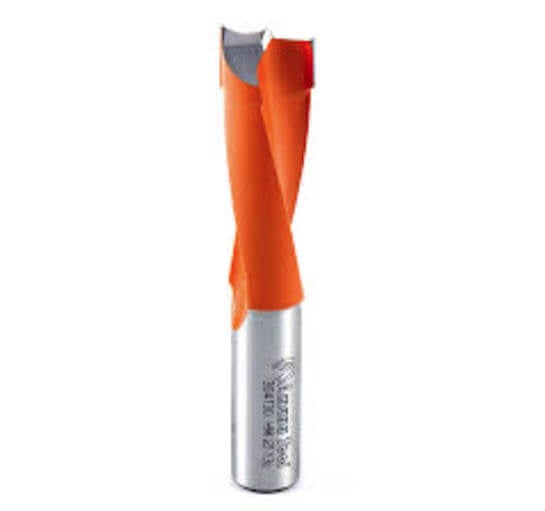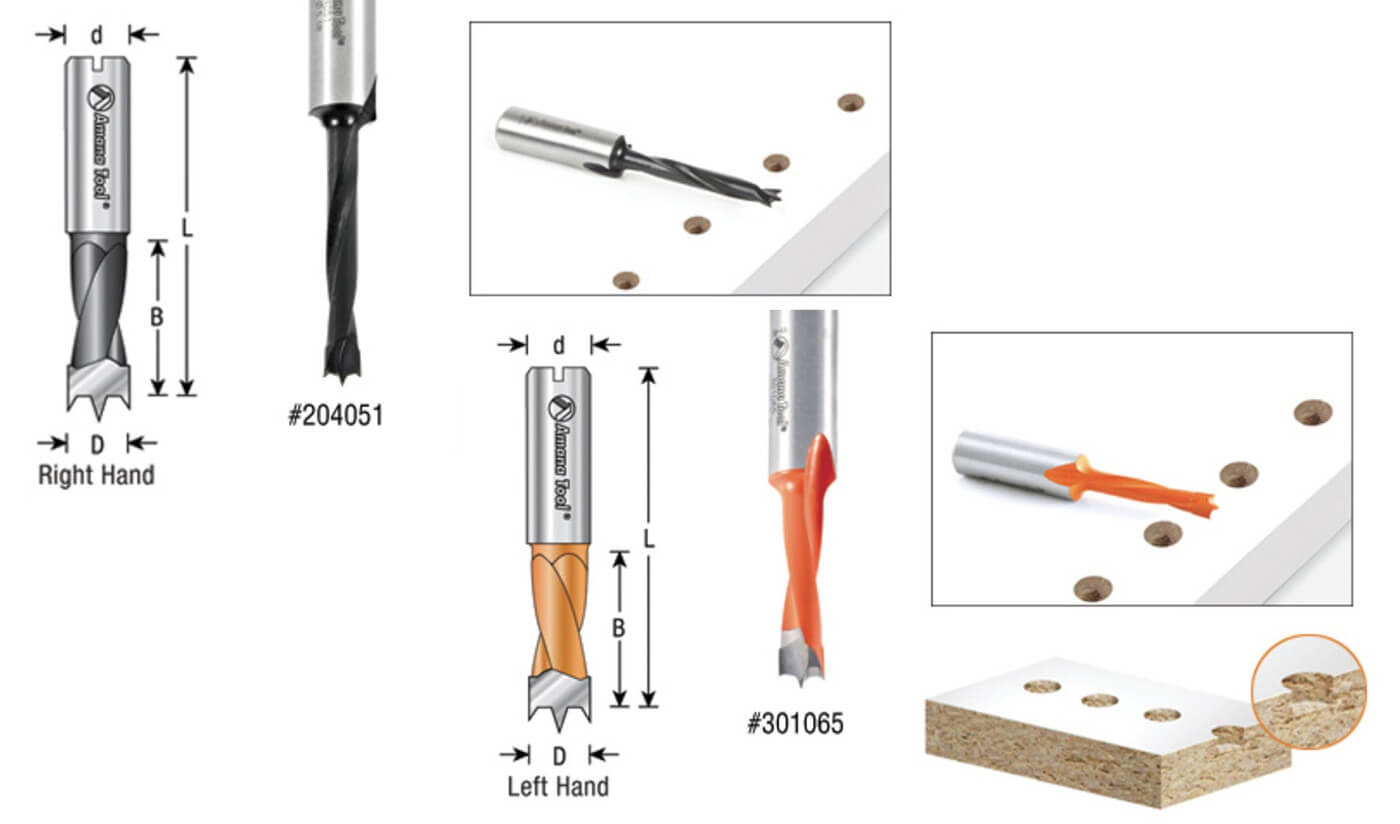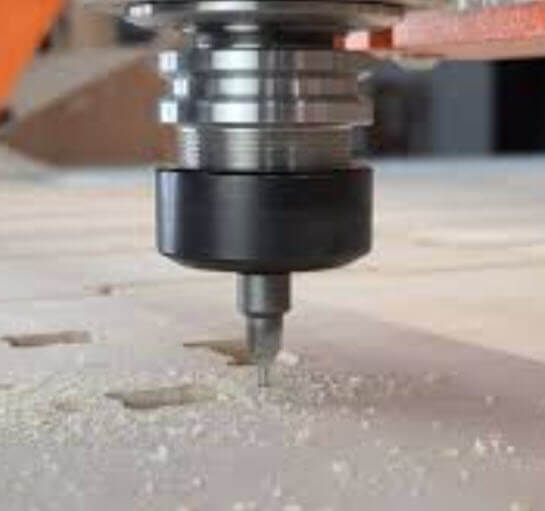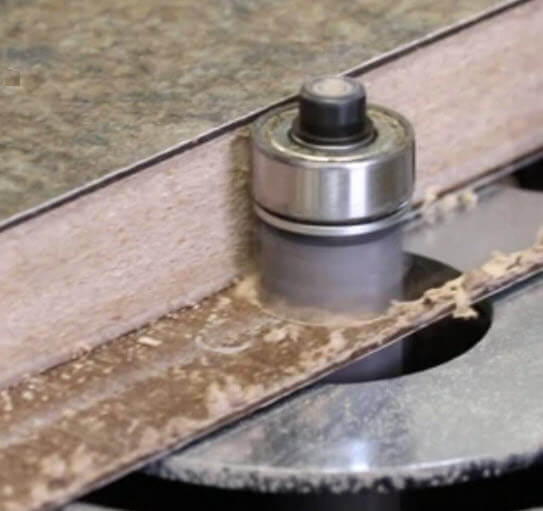
The Brad Point Boring Bit
The uniqueness of a Brad Point Boring Bit lies in the sharp pin at the tip of the bit which bites into the wood to ensure a straight and even hole.
When you’re building a cabinet or a bookshelf, the holes for the pins can just as easily be made with your hand drill and a basic wood bit. This is a shortcut that may or may not give you great results. What I mean by great results is that when your pins are placed into these bored holes, are they snug? If not, the strength of the shelf is compromised.
Drilling with the common wood drill bit can result in the hole being cut a bit larger than the diameter of the bit being used, due to wandering. In order to minimize wandering, use a Brad Point bit.
Brad point drill bits are specially designed to drill and bore clean holes in hard and soft woods without wandering. These drill bits have been designed with a center pin as seen below.

A brad point drill provides a clean, straight, and accurately sized hole in wood. Not all boring is performed at a 90 degree angle and when one needs to bore at a slight angle the pin acts as the guide to the required position.
A clean cut is also not to be taken for granted. When one is boring holes for pins, with ordinary bits one may end up with edges which are jagged and have slight tear outs, leaving a rough surface. With the brad point bit, the outlining spurs of the bit shear the wood grain as it’s cutting and leaves a nice clean edge around the opening of the hole, eliminating the need for finish sanding.

Amana Tool® Industrial Brad Point Boring Bits are Coated with a Non-Stick Coating for Longer Lasting Cutting Edge and Tool Life.
They come in Right-Hand (RH) and Left-Hand (LH) versions. Right hand tools rotate clockwise. Left hand tools rotate counter-clockwise.
All are coated with a special Polytetrafluoroethylene (PTFE), a non-stick color coating. In cases where the carbide tip cutting edges are coated, there is no need to sand the coating off before use. Once the tool starts drilling, the coating is cleared off the needed cutting edge right away.
Amana's coating is applied onto the bit at a temperature of 570° F. The coating reduces the friction between the chip and the body inside the flute and it helps to clear the chips out of the hole during the drilling creating a cooler drilling area, no burning and longer lasting cutting edge.
Always, a good rule of thumb when it comes to operating a shop is to only purchase tools and accessories which will bring value to your shop.
Ask yourself:
- Will I use this tool in the long term?
- Does the size of it hinder movement in the shop?
- Are the costs excessive?
- If I purchase X will it save time and how does that equate to money saved?
If you work in the industry of cabinet and kitchen making there is no question that such a bit is valuable on all accounts. First, carbide-tipped brad point bits have a long life and keep sharp longer than most on the market. Second, there is no question regarding size, these bits fit in the palm of one’s hand. Third, the costs are very reasonable and are not a variable in your decision to buy. Fourth, the fact that these bits do not allow wandering and leave clean edges will save much time in not only machining the holes but sanding the edges.
In conclusion, we all would like to take shortcuts when necessary but when boring pin holes, there is no shortcut in using standard drill bits. Like my 8th grade woodshop teacher taught me, work smart, slow and you will finish correct and fast.
Frequently Asked Questions About Brad Point Boring Bits
What is a Brad Point Boring Bit used for?
A Brad Point Boring Bit is designed to drill clean, accurate holes in wood. The sharp center point prevents wandering, while the outlining spurs shear the wood fibers cleanly, reducing tear-out. They're ideal for cabinetry, shelving, dowel holes, and any project where precision matters.
Why is the center point important?
The sharp center pin (brad point) ensures the bit starts exactly where you want it—without sliding or wandering across the wood surface. This makes it much easier to drill perfectly placed holes, especially when working on finished surfaces or delicate materials.
Can I use Brad Point bits in a handheld drill?
Yes! Brad Point bits work great in handheld drills, though they really shine when used in drill presses or guided jigs where precision is key. Just be sure to keep the drill steady to take full advantage of the clean cutting action.
What's the difference between Right-Hand and Left-Hand Brad Point bits?
Right-Hand (RH) bits rotate clockwise and are compatible with standard drills. Left-Hand (LH) bits rotate counter-clockwise and are used for specialized applications, such as certain production machinery or for removing broken screws. Make sure you choose the correct type for your tool.





